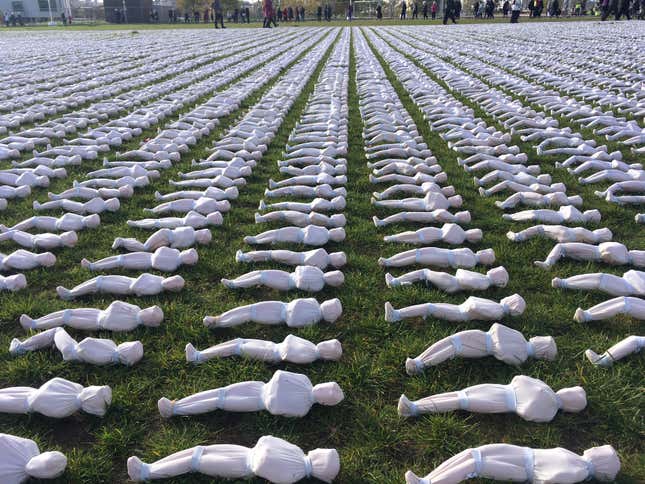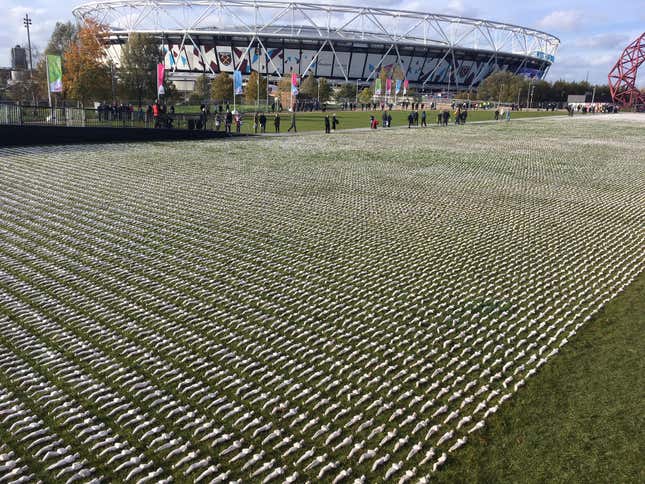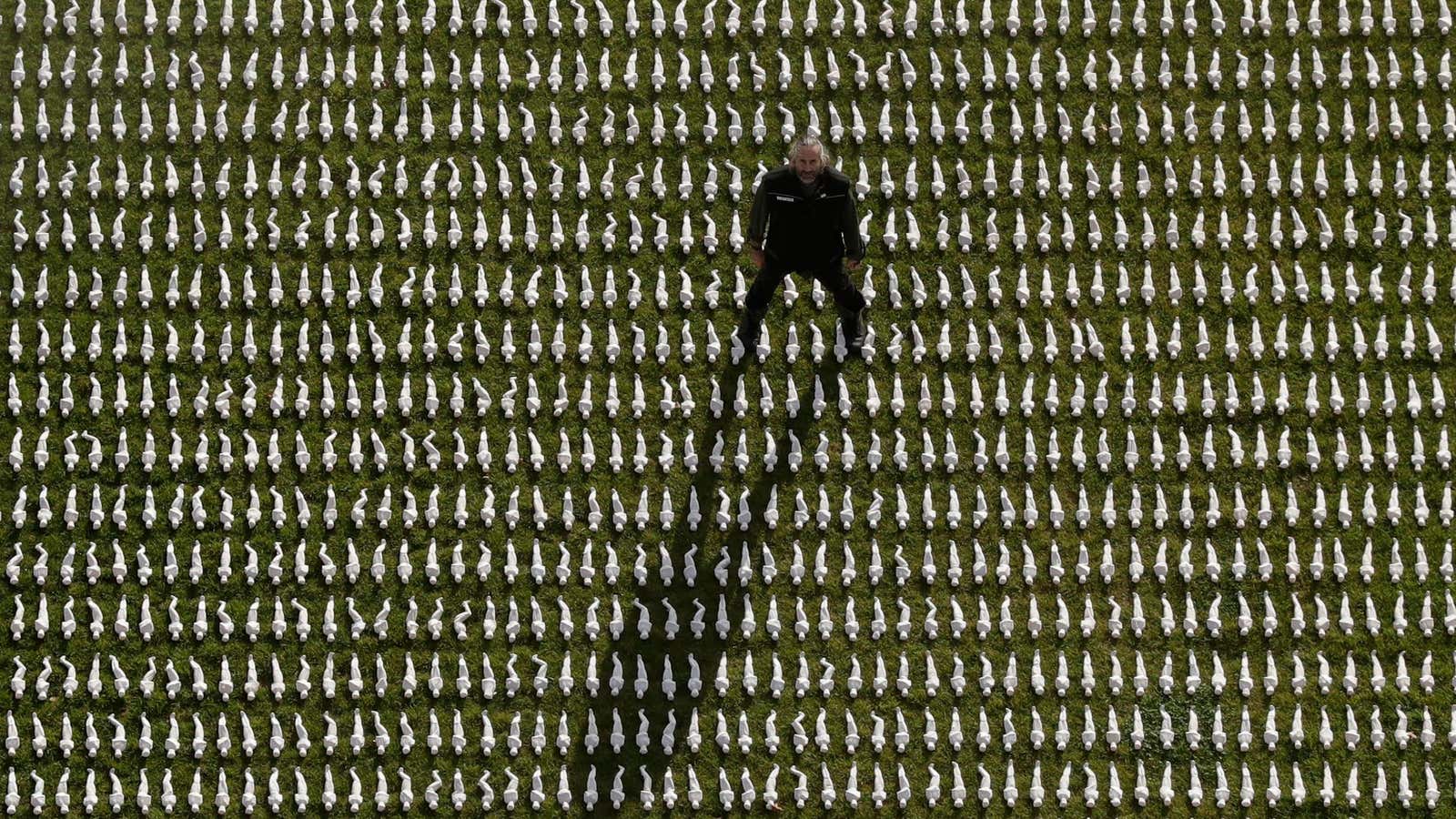Across the grass in London’s Queen Elizabeth Jubilee Park, 72,397 figures are laid out, stretching into the distance, casting small shadows. One unique figure for every British man killed at the Battle of the Somme whose body was never found.
Susan Collyer, indomitable in mulberry-colored coat, curled white hair, and walking stick, stared down at a small, shrouded body with a wooden cross at its head. On the cross, a number: 19,240. That’s the number of British men killed on the first day of the Somme, the deadliest day of the war for British soldiers.
“What have we learned?” Collyer asked. No one answered.
Still, the question was on visitor’s minds. Titled Shrouds of the Somme, the exhibit will run for ten days in the landscaped park, alongside monolithic sports structures and unfinished construction, a legacy of London’s time hosting the 2012 Olympics.

It was a bright, windswept day. As visitors began to circle the field of shrouded forms, conversations were audible. Visitors mentioned grandparents, great uncles, family members who lost their sons. Across the low murmur of voices, one was louder than the others: A volunteer reading each name in turn from a list of the fallen, a tradition that can emphasize the loss. “Private Ernest Ambler, 22, Lancashire Fusiliers,” the voice read. The Battle of the Somme lasted five months and was one of World War I’s deadliest, with one million people British, French, and German soldiers dead or wounded by its end.
Many of the visitors, like Collyer, were old enough to remember people who had fought in World War I—the armistice took place 100 years ago this week. For others, it might seem like ancient but important history. A volunteer estimated that around two thousand schoolchildren visited the exhibit on its opening day.
Rob Heard, the artist who conceived the project, said it was the children’s questions that made him most excited about the work. They ask him how he made the exhibit, and are “genuinely riveted [by] the answer.” Heard began the project after both his hands were so badly damaged in a car accident that he could no longer continue with his work as a wood carver. He spent five years sewing each figure in turn into its shroud and storing them in a specially constructed shed-come-studio in his garden.
“You stand a child around a great big block of granite with names carved into it…it’s difficult for them to relate to that,” he said. “If you have something physical like this that they don’t have to imagine what it is, [if] they can see what it is, then they get to understand.”

Margaret, Audrey, Beryl, and Lily were looking over the shrouds, denouncing the price of eggs on toast at the nearest tourist-oriented café (“Nearly £8!”). In their 70s and 80s, they shared strong memories of World War II; more than one had experienced the Blitz in London. They took the opportunity of the exhibit to revisit those memories, and even long-past outrage: Margaret said her grandmother received a one-off compensation payment of “two pounds-seven-and-six” after her son was killed in World War I.
Reading about a war is one thing, Susan Collyer said, but she echoed Heard in suggesting that seeing something so visual produced quite a different effect. She had travelled up from her home in a neighboring county, alone, to see the piece, even though her “other-half” didn’t like her “coming up to London.” Her next stop was the ArcelorMittal Orbit, a huge sculpture in the park. She wanted to see the shrouds from the air and, perhaps, think more about what could be learned from the loss they represent.
This post was updated to clarify two different elements of the exhibit.
